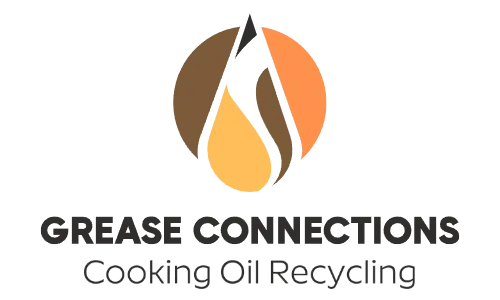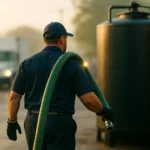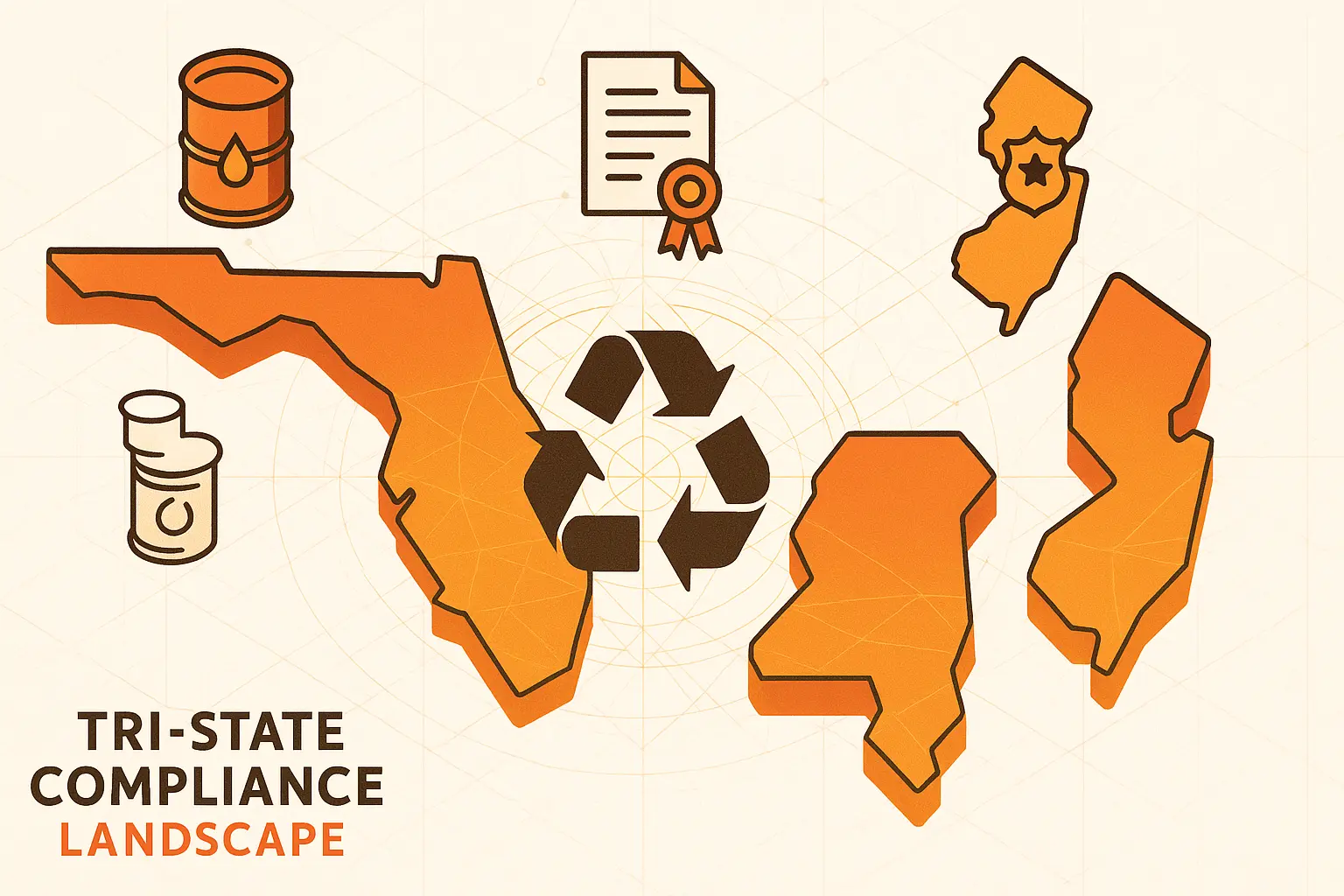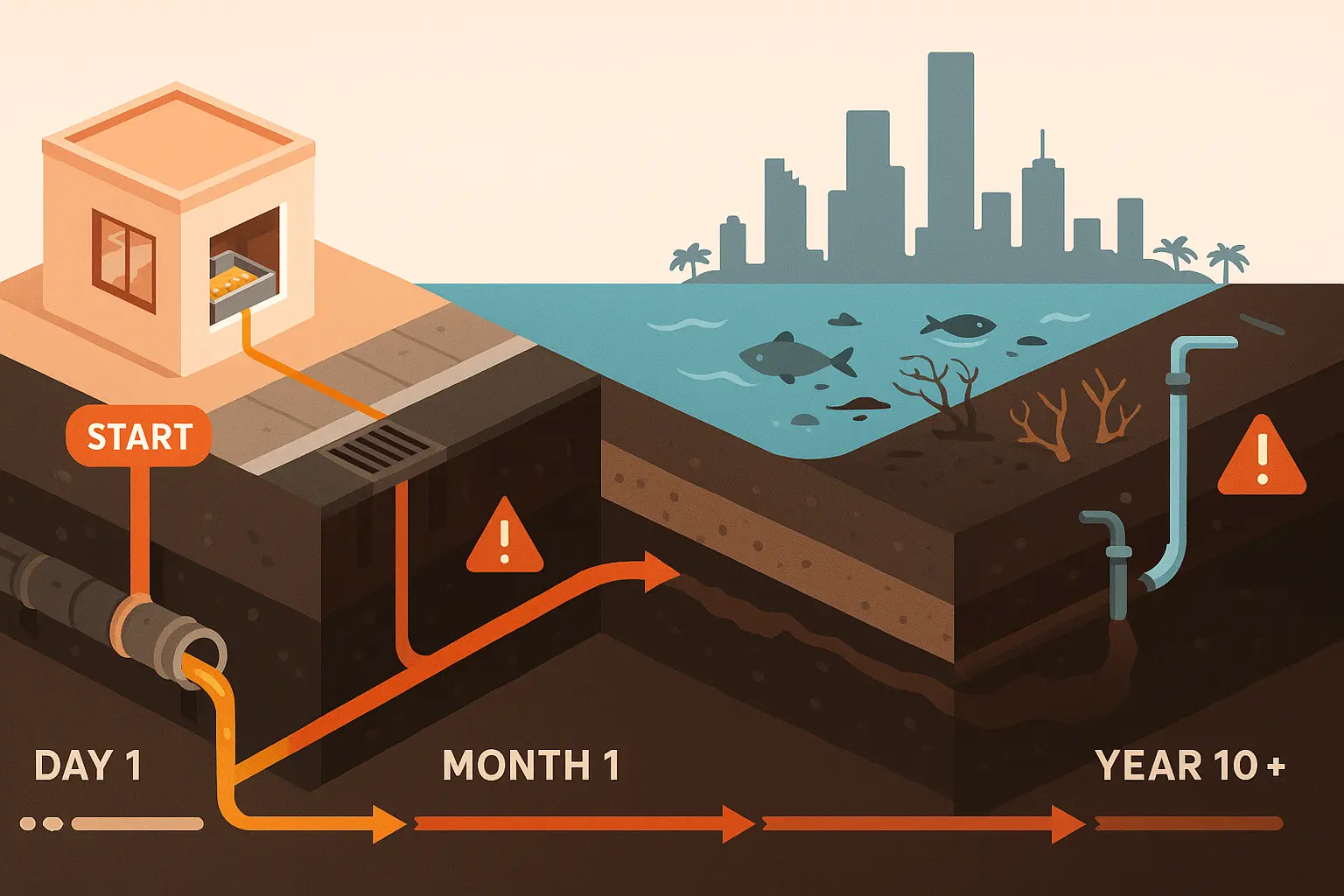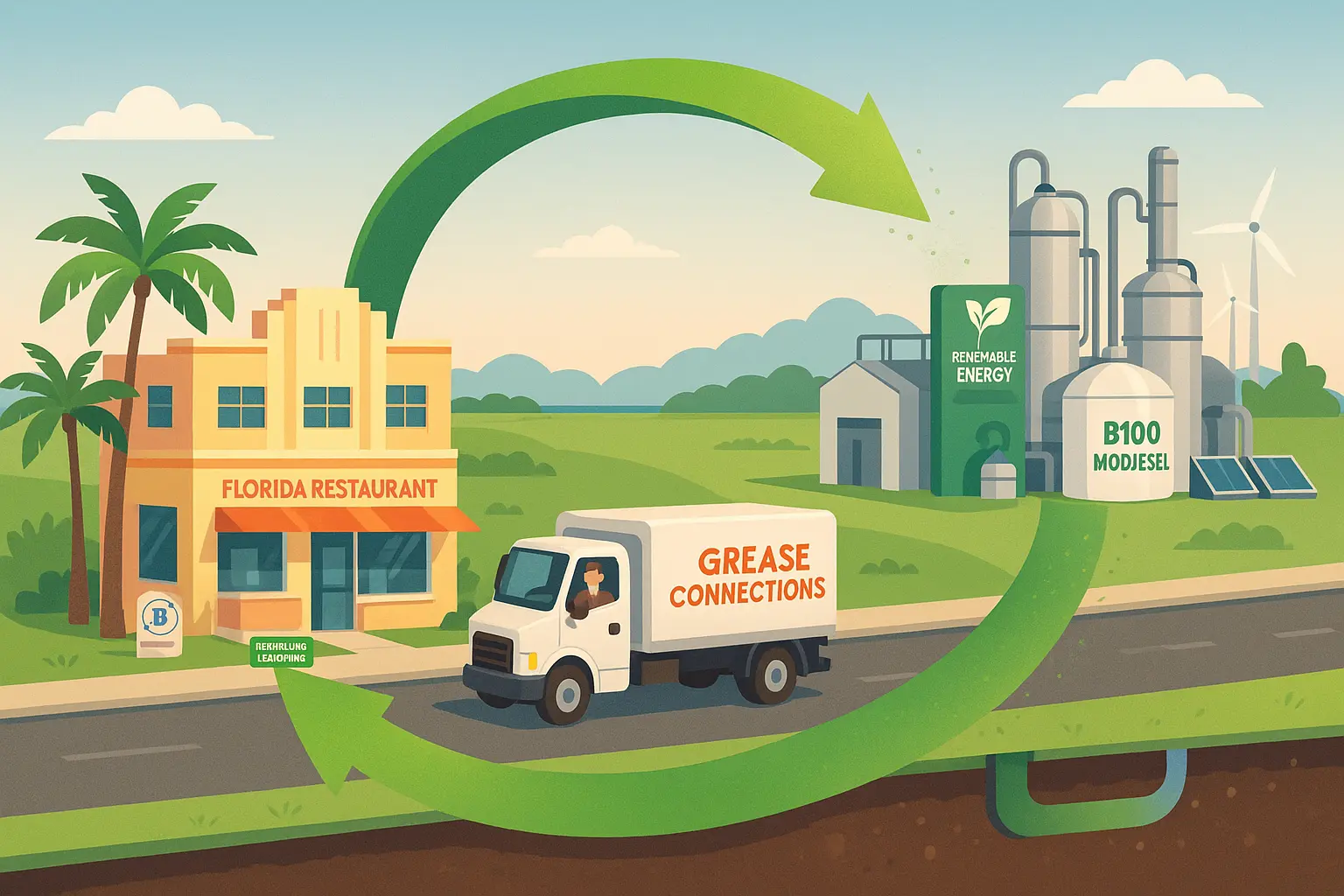Table of Content
Short on Time? Your 3‑Minute Success Path
Key Takeaway → Your fryer grease is worth 30–50 ¢ / gal. Capture it and you’ll offset disposal fees and bank extra cash inside one quarter.
ROI Formula → (Gallons × Rebate) + Disposal Cost Avoided = Net Profit.
Best All‑Around Container → A 45‑gal wall‑mount caddy—pizza‑box footprint, locks tight, clears inspectors.
Do This Now → Text “ROI” to (305) 204-5207 and I’ll run your numbers while you flip eggs.
1 Why This Matters
Running a 25‑seat diner means dodging rising food costs, surprise inspectors, and an oven that quits on Friday night. Adding grease recycling might sound like one problem too many.
Here’s the thing most owners miss: a fryer spill is money melting. I learned that the sweaty way in 2012 when Mario’s fryer belched onto the line. Two mops, one slip‑and‑fall scare, and a three‑hour deep‑clean later, Mario asked if the mess could somehow pay us back. Thirteen years and seventy‑five kitchens later, the answer is louder than a lunch rush: yes—if you right‑size the system to your space.
First, Mario discovered the fryer leak cost him more in labor than ingredients. Second, the health inspector flagged the puddle as a slip hazard. Third, the real surprise came when Mario’s insurance agent shaved two points off his premium after we installed a wall‑mount caddy. That discount alone paid for the tank.
(Trust me, I’ve seen this backfire spectacularly when owners delay.)
2 Liquid Gold Hiding in Plain Sight
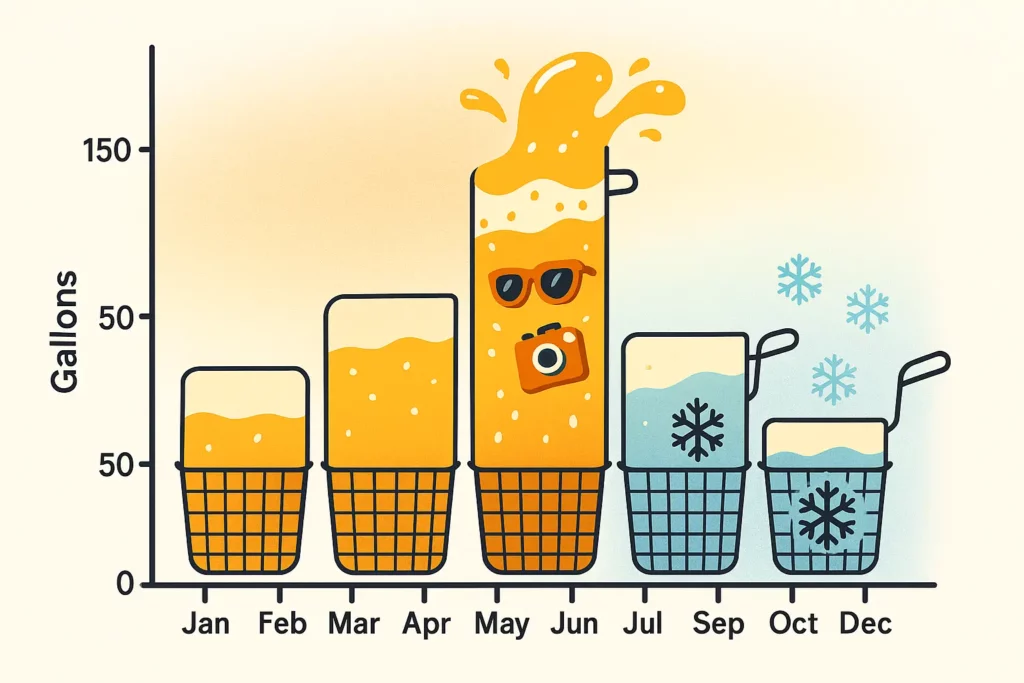
Lou, a wings‑shop owner in humid Georgia, once texted me a picture of two spent oil jugs asking, “Worth anything?” Each jug holds 12 gal. At 💲0.32–0.40 a gallon, those jugs are a weekend beer order waiting to be cashed. Three jugs a week? Sixty dollars you didn’t know existed. But here’s where it gets interesting…
Beyond the Southeast
Rebate rates flex by fuel demand and freight:
- Florida hovers $0.34–0.40 / gal and requires a state‑issued manifest number on every pickup.
- Georgia pays the richest spread—$0.35–0.43—but adds an EPA e‑report within 15 days.
- New Jersey trades around $0.36–0.44 with quarterly stormwater audits.
Northern kitchens face 50 % winter volume drops because fries replace salads; desert states must spec UV‑resistant poly tanks so the sun doesn’t bake the gasket. Remote towns? Expect rebates 10–15 % lower; trucking eats margin.
Before you shrug: Check .gov/recycling for the exact manifest rule. One form now beats a $500 fine later.
Mini‑cliffhanger: In a minute I’ll show you how a Minnesota café beat freeze‑thaw trouble—but first jot down yesterday’s dump count; you’ll need it for the math.
3 Reality Check: Your Kitchen, Your Constraints

Maria Delgado of Clearwater swore she was “too small.” A dawn FaceTime proved otherwise when we spotted a dusty 14‑inch gap behind her fridge. That sliver became a 45‑gal wall‑mount. Two weeks post‑install her first $32.80 rebate check arrived—she framed it next to a coffee‑stained menu.
Here’s what most owners miss… Space myths die when you tape a pizza box to the wall and realize you already walk past it. Volume fears? Routes, not jugs, dictate pickup. If the truck rolls by, 25 gal a month is plenty. And staff pushback? Promise the first rebate buys their Friday pies—it works every time.
But here comes the suspense: what if the sensor fails at 2 a.m. and oil overflows? Lou lived that nightmare; keep reading for his fix.
4 Profit Math Made Easy
Dave’s Espresso‑Fund Equation
Dave Kim burns 18 gal/week in Hoboken. At 💲0.30 a gallon, his math lands at $46.50 net each month. Subtract the $125 tank cost and he clears the investment in under three months—faster than the hockey season he streams on the prep TV.
BEFORE: Paying $24/month to dump grease.
AFTER: Banking $46/month profit.
Day‑by‑day, the process looks like:Day 1 → Track gallons | Day 2 → Measure space | Day 3 → Call haulers
Seasonal tourists swell volumes by 40 %. No panic—text the hauler, request an extra pull. Winter slumps? Same text, but skip a week. Here’s the twist: a New Jersey café learned frozen lines clog sensors; we swapped in a heat‑tape wrap for $35 and kept rebates flowing even at −10 °F.
5 Space‑Smart Container Choices
Picture your back‑of‑house from above:
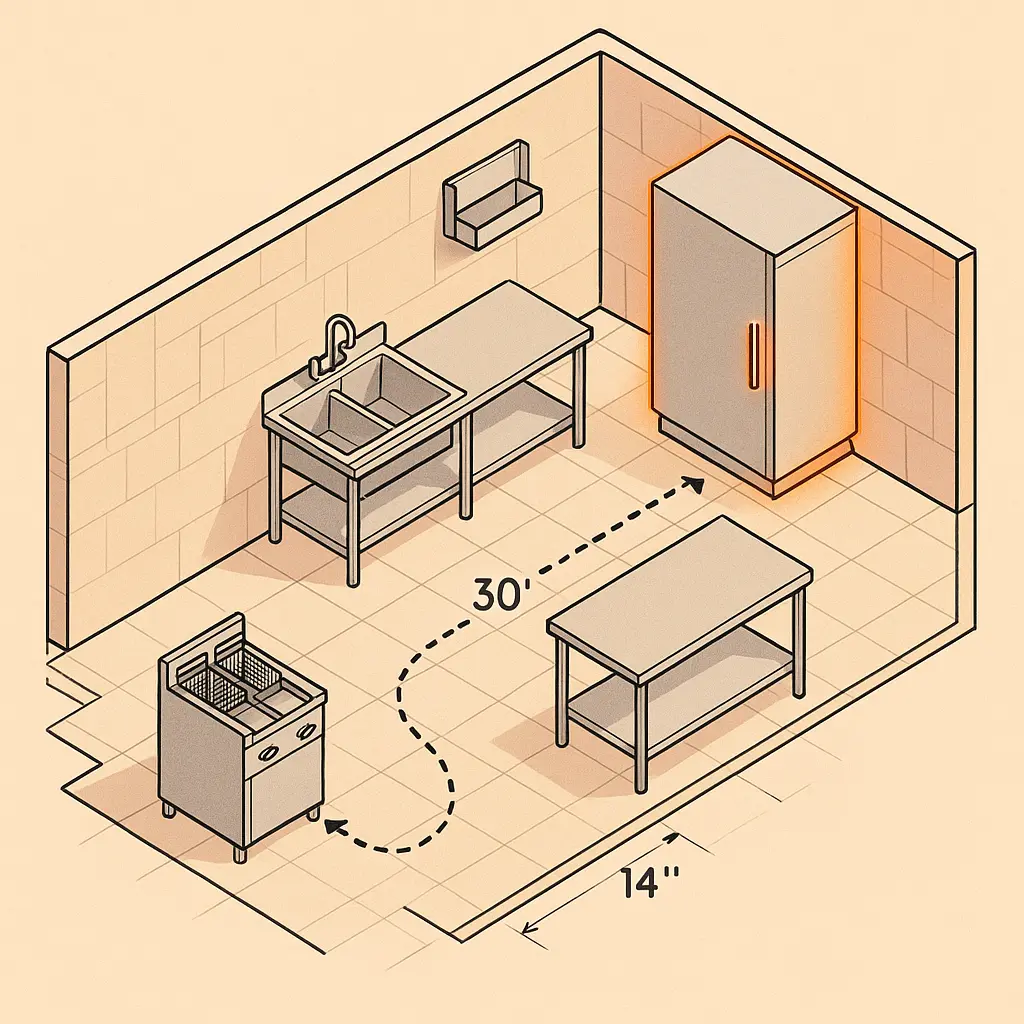
That bracketed “CADDY” is Maria’s tank—lifted off the floor, nowhere near the fire exit.
Scenario 1: Corner Drum. Cheap, 55 gal. Padlock it and pump‑out quarterly. Spill‑prone when staff rush.
Scenario 2: Slim Caddy on Wheels. Rolls like a bus cart through tight aisles; perfect for Chef Hana’s sushi line.
Scenario 3: Wall‑Mount Hero. Inspector‑proof. Yes, the installer will need four masonry anchors—but the result floats above mop water.
Decision Tree: If your open span is <18″, go wall‑mount. If you share an alley with neighbors, choose the 100‑gal cube and split rebates. Still unsure?
Call us—We love weird floor plans.
6 30‑Day Action Plan
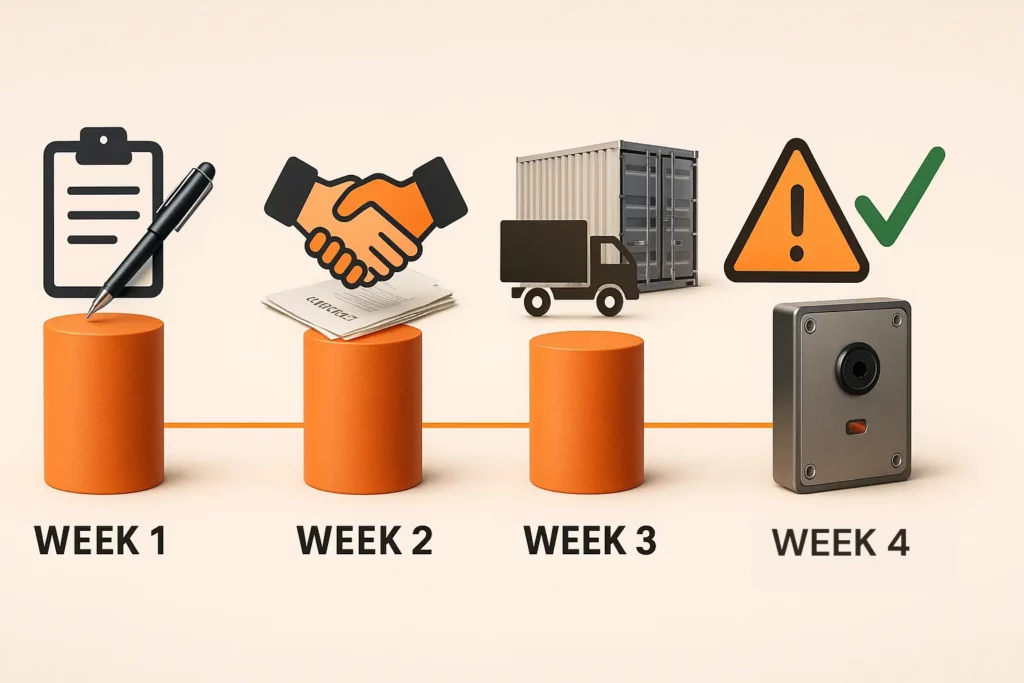
Week 1. Dave called in a panic: “We only logged 60 % of dumps.” We added a clipboard at the fryer and numbers snapped into place.
Week 2. Negotiations. Two haulers pitched offers; Dave chose the one indexing rebates to soybean futures. Smart move, because fuel prices jumped 12 % that quarter.
Week 3. Container arrived early. Staff training lasted one playlist. Cool—filter—pour—sign. Simple.
Week 4. Sensor glitch alert! Lou’s tank pinged zero during Friday rush. Backup poly drum caught the overflow, and the hauler swapped sensors at no charge Monday morning.
Pause here: Ask yourself, Have I budgeted five minutes a day for log checks? If yes, you’re ready for inspectors.
7 Operating Realities & FAQs
What if the inspector shows tomorrow? Keep manifests accessible—digital or binder. Show secondary containment and a clean floor; you’ll pass.
How do I keep rebates high? Strain crumbs, cool oil (steam means water). Quality is cash.
Will insurance care? Maria’s carrier cut 1.5 % off premiums once photos showed a sealed, wall‑mounted tank.
Mini‑cliffhanger: The biggest rebate killer isn’t water—it’s theft. One more page and I’ll show you the $9 padlock that saved Lou a headache.
8 Financial & Contract Questions
Tax season looms? Log rebates under “Other Income” and stash 25 %—your CPA will thank you. Lock‑ins? Most trash contracts allow recycling carve‑outs with 60‑day notice. Hauler bankrupt? Own your tank or include a buy‑back clause and keep two backup haulers on speed dial.
Across the U.S., rebates ride rail and fuel costs: Mid‑Atlantic kitchens earn 20 % more than Midwest diners; West Texas trucks burn diesel dollars, trimming payouts by 10 %. Always verify the current quarter price before signing.
9 Ongoing Partnership Payoffs
Hana once panicked over a hurricane watch. Her hauler gave her priority pump‑out, avoiding a curbside overflow fine. That’s partnership: invisible until you need emergency service, then priceless.
10 Your Next Three Moves
First, text “ROI” to (305) 204-5207. Second, book a 15‑minute free walkthrough so I can spot your hidden inches. Third, print the SOP poster and have cooks initial every pour—accountability beats memory.
If you found value, hand this guide to the café next door and bank goodwill (plus quieter alleys).
11 Sources & Credits
USDA Biofuels Desk Report Jan 2025; Global Market Insights UCO Market Review 2024; Florida SB 1110; Georgia Food Code Rev 2025; NJ Food‑Waste Recycling Law 2025; Texas TCEQ Grease Recovery 2024; California EPA RCRA Guidance 2025; Verified rebate stubs on file (Maria D., Dave K., Lou T., Hana S.)
© 2025 Grease Connections | Written with fry‑greased fingerprints by Jorge Argota | Questions? Jorge@GreaseConnections.com
